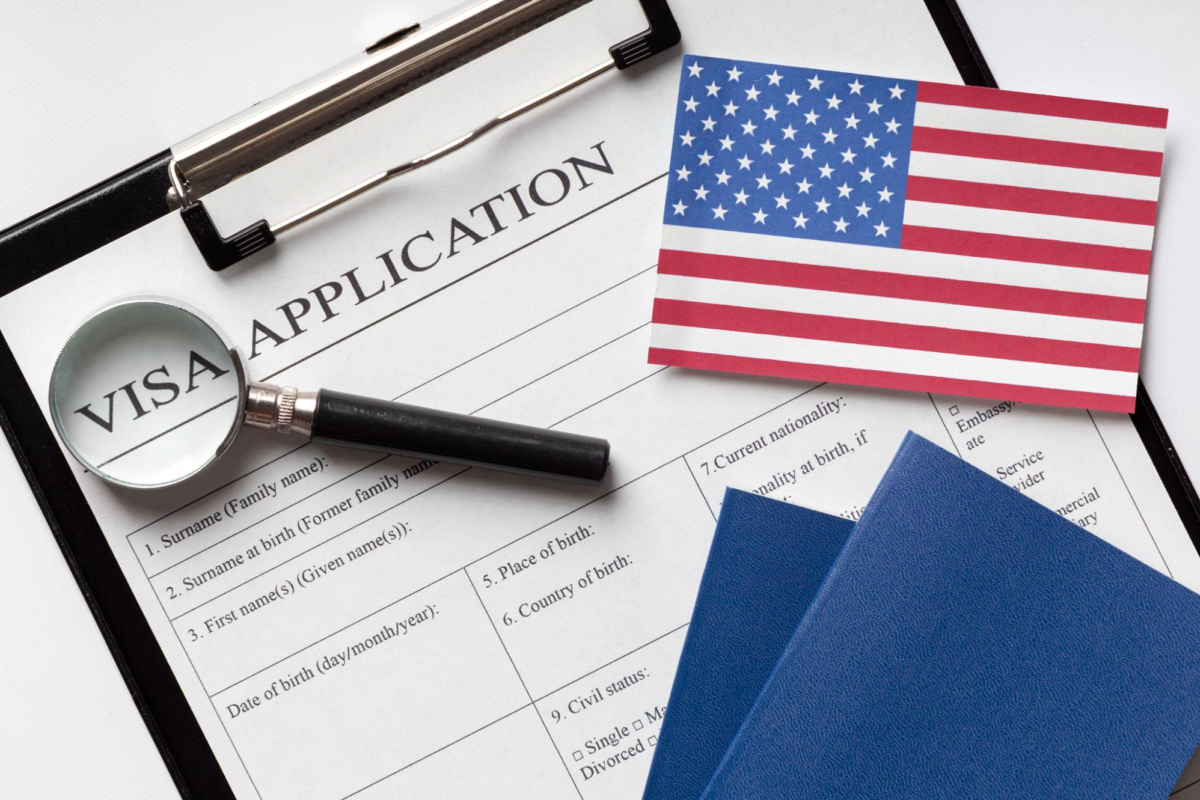The allure of the United States as a land of opportunity has, for centuries, drawn individuals from every corner of the globe. People choose to immigrate to the US for a myriad of reasons—seeking better economic prospects, reuniting with family, pursuing educational opportunities, or escaping adverse conditions in their home countries. The promise of freedom, coupled with the potential for a new beginning, makes the US an enduring symbol of hope and prosperity.

However, the path to making this dream a reality is often fraught with challenges. The US immigration process is renowned for its complexity, characterized by a labyrinth of legal requirements, myriad visa categories, and an often lengthy and uncertain waiting period. For the uninitiated, navigating this process can be daunting—a journey through a dense forest of paperwork, legal nuances, and procedural steps that may seem insurmountable.
Recognizing the complexities of US immigration law and the profound impact it has on individuals and families, this article is designed to guide you through the intricacies of the immigration process. Our goal is to provide you with a comprehensive understanding of the different types of visas, detail the application processes, and outline the requirements necessary to embark on your journey.
Overview of the US Immigration System
Before we delve into the complex process of US visa application, we’ll first give you an overview of the US immigration system, explaining governing bodies, key components, guiding principles, and some challenges and considerations. Understanding its structure is crucial for anyone looking to navigate the process successfully.
- Legal Foundations and Governing Bodies
- US Citizenship and Immigration Services (USCIS): Handles the processing of various immigration and citizenship applications, including petitions for family and employment-based visas, naturalization, and asylum or refugee status.
- US Customs and Border Protection (CBP): Responsible for monitoring and securing US borders, CBP officers determine the admissibility of individuals at ports of entry.
- US Immigration and Customs Enforcement (ICE): Enforces federal laws governing border control, customs, trade, and immigration to promote homeland security and public safety.
- Key Components of the Immigration System
- Non-Immigrant Visas: For individuals who intend to stay in the US temporarily. This category includes visas for tourism, business visits, temporary work, study, and exchange programs.
- Immigrant Visas: For those seeking to become permanent residents or Green Card holders. Pathways include family-based immigration, employment-based immigration, the Diversity Visa Lottery, and special immigrant categories.
- Humanitarian Protections: Programs like asylum, refugee status, Temporary Protected Status (TPS), and the Deferred Action for Childhood Arrivals (DACA) provide protections to individuals fleeing persecution, violence, or disasters.
- Naturalization: The process by which eligible Green Card holders can become US citizens, involving criteria such as length of residency, good moral character, and knowledge of US history and government.
- Principles Guiding US Immigration Policy
- Family Reunification: A cornerstone of US immigration policy is prioritizing the reunion of families through specific visa categories.
- Employment-Based Immigration: Facilitating the entry of workers with specific skills or employment opportunities in the US to support economic growth.
- Diversity: Encouraging immigration from countries with low rates of migration to the US through the Diversity Visa Program.
- Protection: Offering refuge to individuals facing persecution, violence, or disasters in their home countries.
- Challenges and Considerations
The US immigration system is subject to ongoing debates and reforms, reflecting the dynamic interplay between national security, economic needs, humanitarian commitments, and public sentiment. Applicants must navigate a system characterized by:
- Complex Regulations: The legal and procedural nuances of immigration law can be challenging to interpret without professional guidance.
- Quotas and Caps: Certain visa categories have annual limits, affecting the availability and wait times for these visas.
- Security Screenings: Applicants undergo rigorous security checks that are aimed at safeguarding national security but potentially prolong processing times.
The US immigration system, with its comprehensive structure and multifaceted objectives, plays a critical role in shaping the fabric of American society. By understanding its foundational principles, governing bodies, and the various pathways to entry and residency, prospective immigrants can better prepare for and navigate the complexities of this journey.
Non-Immigrant vs. Immigrant Visa
While this article will primarily delve into the intricacies of the US visa application process for prospective immigrants, it’s imperative to grasp the distinctions between non-immigrant and immigrant visas and their respective implications.
Non-Immigrant Visas
Non-immigrant visas are designed for individuals intending to stay in the US temporarily. These visas cover a wide range of purposes, including tourism, business trips, short-term work assignments, study, and temporary engagements in cultural exchange programs. Non-immigrant visas are characterized by:
- Temporary Purpose: Applicants must demonstrate their intent to return to their home country after their visa expires.
- Limited Duration: Each visa type has a specified duration, ranging from a few months to several years, but all imply a temporary stay.
- No Path to Citizenship: While some non-immigrant visas can be adjusted to immigrant status under specific conditions, non-immigrant visas, by definition, do not offer a direct path to US citizenship.
Immigrant Visas
Immigrant visas, on the other hand, are issued to individuals seeking to live permanently in the US. These include visas for family reunification, employment-based categories, the Diversity Visa Lottery, and special immigrant visas. They lead to lawful permanent residency (commonly known as getting a Green Card), which can eventually lead to US citizenship. Characteristics include:
- Permanent Residency: Holders are granted the status of Lawful Permanent Residents (LPRs), allowing them to live and work indefinitely in the US.
- Path to Citizenship: After meeting certain conditions, including length of residency and good moral character, LPRs can apply for US citizenship through naturalization.
- Broader Rights: While non-immigrants are restricted in work and may have limited access to benefits, immigrants enjoy rights closer to those of US citizens, including access to a wider range of employment opportunities and social benefits.
The choice between non-immigrant and immigrant visas ultimately depends on an individual’s personal circumstances, goals, and eligibility. For many, the journey begins with a non-immigrant visa, serving as a stepping stone to permanent residency and, possibly, citizenship.
Immigrant Visa vs. Green Card
Immigrant visas and Green Cards are often interchanged in the US immigration process, and while they serve similar purposes of enabling individuals to obtain lawful permanent residency, there are key differences between the two. And it’s important for aspiring immigrants to be able to differentiate them as parts of the process requires the involvement, particularly the sponsor, of someone with a Green Card. So here’s how the two differ:
Green Card

A Green Card, officially known as a Permanent Resident Card, is a document issued by the US government to foreign nationals, granting them the legal right to live and work permanently in the United States. It’s characteristics are:
- Lawful Permanent Residency: Holders of a Green Card are already considered lawful permanent residents (LPRs) of the United States, enjoying most of the rights and benefits accorded to US citizens, including the right to live and work anywhere in the country.
- Indefinite Duration: Green Cards typically have a validity period of 10 years and can be renewed indefinitely, allowing holders to maintain their status as permanent residents as long as they meet requirements.
- Path to Citizenship: Green Card holders may be eligible to apply for US citizenship through the naturalization process after meeting certain criteria, including a period of continuous residence and physical presence in the United States.
Here are the ways one can obtain a Green Card:
- Through Immigrant Visa: Individuals obtain a Green Card through the immigrant visa process, either by consular processing at a US embassy or consulate abroad or by adjustment of status within the United States.
- Through Other Means: Some individuals may be eligible for Green Cards through refugee or asylee status, humanitarian parole, special immigrant categories, or the Diversity Visa Lottery.
US Immigrant Visa
A US immigrant visa is a travel document issued by a US embassy or consulate abroad, allowing foreign nationals to enter the United States. As for its characteristics, they are:
- Entry Document: Immigrant visas serve as entry documents, allowing holders to enter the United States for the specific purpose of immigration and obtaining a Green Card.
- Validity Period: Immigrant visas typically have a limited validity period, usually six months to one year, during which the visa holder must enter the United States. Once in the US, the visa holder becomes a lawful permanent resident upon approval of their Green Card application.
- Subject to Numerical Limits: Immigrant visas are subject to numerical limits and quotas set by the US government for each visa category, leading to waiting periods and potential backlogs for certain visa types.
In essence, a US immigrant visa is a required document for foreigners to legally enter, reside, and work in the country. After a while, assuming they meet the requirements, they may receive their Green Card which makes them LPRs.
4 Different US Immigration Pathways
Navigating the journey toward becoming a lawful permanent resident of the United States involves exploring various pathways tailored to different circumstances and objectives. Here, we delve into the details of the primary pathways to U.S. immigration, explaining their workings and eligibility criteria:
Family-Based Immigration

Family-based immigration promotes family reunification and unity as it offers a pathway for US citizens and lawful permanent residents (LPRs) to sponsor certain relatives for immigration to the United States. There are several family preference categories and it’s crucial for individuals seeking to sponsor family members for immigration to understand each one.
- First Preference (F1)
The F1 category prioritizes the immigration of unmarried children who are 21 years old or older and whose parents are US citizens. This category places a high priority on reuniting parents with their adult children, enabling them to establish permanent residency in the United States.
- Second Preference (F2A & F2B)
The F2 category encompasses two subcategories:
- F2A for spouses and unmarried children (under 21 years old) of Green Card holders; and
- F2B for unmarried children (21 years old or older) of Green Card holders.
These categories facilitate the immigration of immediate family members of Green Card holders.
Third Preference (F3)
The F3 category is reserved for the immigration of married children of US citizens, enabling US citizens to sponsor their married children and their families for immigration to the United States.
- Fourth Preference (F4)
The F4 category allows US citizens to sponsor their siblings for immigration to the United States, fostering family reunification by facilitating the entry of adult siblings of US citizens.
Family-based visas allow aspiring immigrants to pursue the goal of family unity and permanent residency in the United States.
Employment-Based Immigration
Employment-based visas offer a pathway for foreign nationals to become LPRs or for US employers to sponsor foreign workers for permanent residency based on their skills, qualifications, and employment opportunities. The immigration system provides several categories under this type of visa, each catering to specific employment needs and priorities. Here’s an in-depth exploration of the different categories:
- EB-1
The EB-1 category is reserved for priority workers who demonstrate extraordinary abilities in their respective fields, outstanding professors or researchers, and multinational executives or managers.
- Extraordinary Ability: Individuals with extraordinary abilities in the sciences, arts, education, business, or athletics may qualify for the EB-1A category. They must provide extensive documentation demonstrating sustained national or international acclaim and recognition.
- Outstanding Professors or Researchers: This category is for professors or researchers who have demonstrated outstanding achievements in their academic fields. They must have international recognition and be sponsored by a US employer.
- Multinational Executives or Managers: Executives or managers who have been employed for at least one year by a multinational company outside the US and who are transferred to the US to work for the same employer or a related company may qualify for the EB-1C category.
- EB-2
The EB-2 category is for professionals with advanced degrees or exceptional abilities in the sciences, arts, or business.
- Advanced Degree Professionals: Individuals with a master’s degree or higher, or a bachelor’s degree plus five years of progressive experience in the field, may qualify for the EB-2 category.
- Exceptional Ability: Individuals with exceptional abilities in the sciences, arts, or business, as demonstrated by significant achievements, may qualify for the EB-2 category. They must provide evidence of sustained national or international acclaim and recognition.
- EB-3
The EB-3 category encompasses skilled workers, professionals, and other workers who do not qualify for the EB-1 or EB-2 categories.
- Skilled Workers: Individuals with at least two years of job experience or training and who perform skilled labor requiring a minimum of two years of experience or training may qualify for the EB-3 category.
- Professionals: Individuals with a bachelor’s degree or foreign equivalent and whose job requires at least a bachelor’s degree may qualify for the EB-3 category.
- Other Workers: Individuals performing unskilled labor that is not temporary or seasonal may qualify for the EB-3 category. This category is subject to a limited number of visas each year.
- EB-4
The EB-4 category is reserved for special immigrants, including religious workers, certain employees of US foreign service posts, and other specific categories.
- Religious Workers: Individuals who are members of a recognized religious denomination and who are coming to the US to work in a religious capacity may qualify for the EB-4 category.
- Special Immigrant Juveniles: Children who have been declared dependent on a juvenile court in the United States or who have been placed under the custody of a state agency or individual may qualify for the EB-4 category.
- EB-5
The EB-5 category is for immigrant investors who invest capital in a new commercial enterprise that creates jobs in the United States.
- Investment Requirement: To qualify for the EB-5 category, investors must invest a minimum amount of capital (either $1.8 million or $900,000 in a targeted employment area) and create or preserve a certain number of full-time jobs for qualifying US workers.
By understanding the different categories under employment-based visas, individuals can explore the most suitable route for achieving their immigration goals and contributing to the economy and workforce.
Humanitarian-Based Immigration
Humanitarian-based immigration refers to the process through which individuals are granted lawful permanent residency in the United States based on humanitarian grounds or compelling circumstances. These individuals may be fleeing persecution, violence, natural disasters, or other urgent situations in their home countries. While there is no specific visa category called “humanitarian-based immigration,” several immigration pathways exist that cater to individuals in need of humanitarian protection or assistance. Here are some key avenues:
- Asylum
Asylum is a form of protection granted to individuals who have fled their home countries due to persecution or a well-founded fear of persecution based on race, religion, nationality, political opinion, or membership in a particular social group. To apply for asylum, individuals must be physically present in the United States or at a port of entry and submit Form I-589, Application for Asylum and Withholding of Removal, within one year of their arrival in the US. If granted asylum, individuals go through the Green Card application process one year after being granted asylum status.
- Refugee Status

Refugee status is granted to individuals who are located outside the United States and are unable or unwilling to return to their home countries due to a well-founded fear of persecution or other humanitarian crises. Refugees are typically referred for resettlement in the United States by the United Nations High Commissioner for Refugees (UNHCR) or other authorized organizations. Upon arrival in the United States, refugees are granted a Green Card and are eligible to apply for citizenship after five years.
- Special Immigrant Visas (SIVs)
Special Immigrant Visas are available to certain groups of individuals who have provided valuable service to the US government or military abroad, particularly in Iraq and Afghanistan. This includes individuals who have worked as interpreters or translators for the US military or government, as well as certain employees of the US embassy or consulate. SIV holders are granted lawful permanent residency upon arrival in the United States and may apply for citizenship after meeting certain requirements.
- Temporary Protected Status (TPS)
Temporary Protected Status is granted to individuals from designated countries affected by armed conflict, natural disasters, or other extraordinary conditions. It provides temporary legal status and work authorization to eligible individuals, allowing them to remain in the United States until conditions in their home countries improve. While TPS does not directly lead to a Green Card, individuals who are eligible for TPS may have other avenues to obtain lawful permanent residency.
These humanitarian-based immigration pathways provide critical protection and assistance to individuals in need of humanitarian relief, allowing them to seek safety and build new lives in the United States.
Diversity Visa (DV) Lottery Immigration
Commonly known as the Green Card Lottery, this is a unique immigration program administered annually by the US Department of State. It provides a limited number of immigrant visas to individuals from countries with historically low rates of immigration to the United States.
To participate in the DV Lottery, individuals must be natives of countries that have low rates of immigration to the United States. The list of eligible countries is determined by the US government and may change from year to year, but typically, it’s the countries that have sent fewer than 50,000 immigrants to the US in the last five years. Additionally, applicants must meet the education or work experience requirements specified by the US Department of State. They must have at least a high school diploma or its equivalent, or two years of work experience within the past five years in an occupation that requires at least two years of training or experience.
The selection process is completely random and computer-generated, so like a lottery, it’s really up to luck. However, once chosen, individuals, along with their spouses and any unmarried children under the age of 21, may apply for an immigrant visa.
The DV Lottery Immigration Program promotes diversity and ensures that immigrants from a wide range of backgrounds contribute to the cultural and economic landscape of the United States.
10 Common Requirements for US Immigration
When applying for immigration to the United States, whether through family sponsorship, employment-based visas, humanitarian programs, or the Diversity Visa Lottery, applicants must meet certain common requirements. These requirements are essential for establishing eligibility and ensuring compliance with US immigration laws.
- Valid Passport
All applicants must possess a valid passport issued by their country of citizenship. The passport should have an expiration date that extends beyond the intended period of stay in the United States.
- Medical Examination
Applicants are typically required to undergo a medical examination by an authorized physician approved by the US Department of State. The examination assesses the applicant’s physical and mental health and screens for communicable diseases.
- Criminal Background Check
Applicants must undergo a criminal background check to ensure they do not have a criminal history that would render them inadmissible to the United States. Certain criminal convictions may result in ineligibility for immigration benefits.
- Affidavit of Support
For many immigration categories, applicants must demonstrate that they will not become a public charge and have sufficient financial support to sustain themselves in the United States. This often involves a sponsor (such as a family member or employer) submitting an Affidavit of Support (Form I-864) to pledge financial responsibility for the applicant.
- Documentation of Relationship (for Family-Based Immigration)
Applicants seeking immigration through family sponsorship must provide documentation to establish the familial relationship between the petitioner (sponsor) and the beneficiary (applicant). This may include birth certificates, marriage certificates, adoption papers, and other relevant documents.
- Proof of Eligibility (for Employment-Based Immigration)
Applicants for employment-based immigration must provide evidence to demonstrate their qualifications, work experience, and eligibility for the specific visa category. This may include educational certificates, employment records, letters of recommendation, and other supporting documentation.

- English Language Proficiency (in some cases)
Depending on the immigration category, applicants may be required to demonstrate proficiency in the English language. This requirement is common for certain employment-based visas and naturalization applications.
- Payment of Fees
Applicants are required to pay processing fees and other applicable fees associated with their immigration applications. These fees vary depending on the type of visa or immigration benefit sought.
- Adherence to Immigration Laws and Regulations
Applicants must comply with all US immigration laws and regulations throughout the application process. This includes providing truthful and accurate information, disclosing any relevant details, and adhering to the terms and conditions of their visa or immigration status.
- Consular or USCIS Interview:
In many cases, applicants are required to attend an interview at a US embassy or consulate abroad (for immigrant visa applications) or with US Citizenship and Immigration Services (USCIS) officers within the United States. The interview provides an opportunity for immigration officials to verify information, assess eligibility, and address any concerns.
Applicants should carefully review the specific requirements for their chosen immigration category and seek guidance from qualified immigration professionals, if needed, to ensure a smooth and successful application process.
The US Immigration Application Process

Now that you’re aware of the terminologies, different pathways, and the many requirements, we’ll go over the application process. It should be no surprise that the application process is long, but we’ve simplified it so it’s easier to follow and you don’t get too overwhelmed. And so, here we go:
- Determine Eligibility
Review the eligibility requirements for the specific immigrant visa category or immigration benefit you are seeking. These requirements vary depending on factors such as family relationship, employment, humanitarian need, or diversity visa lottery participation.
- Gather Required Documents
Collect all necessary documents and evidence to support your application. This may include passports, birth certificates, marriage certificates, educational records, employment verification letters, financial documents, and any other relevant documentation specified by the application instructions.
- Complete Application Forms
Fill out the required application forms accurately and completely. Depending on the visa category or immigration benefit, you may need to complete forms such as Form DS-260 (for electronic immigrant visa applications), Form I-485 (for adjustment of status), Form I-130 (for family-based immigration), or Form I-129 (for employment-based immigration), Form I-864 (for proof of financial support from sponsors), among others.
- Pay Application Fees
Pay the necessary application fees associated with your immigration application. These fees vary depending on the type of visa or immigration benefit you are applying for and may include processing fees, biometric fees, and other applicable charges.
- Submit Application
Submit your completed application forms, supporting documents, and payment of fees through the appropriate channels. This may involve submitting your application online through the USCIS website, mailing your application to a designated USCIS lockbox facility, or submitting your application in person at a USCIS office or US embassy/consulate abroad.
- Attend Biometrics Appointment (if required)
If your application requires biometric data collection (such as fingerprints, photographs, and signatures), you will be scheduled for a biometrics appointment at a designated USCIS Application Support Center (ASC). Attend the appointment as scheduled and provide the required biometric information.
- Attend Interview (if required):
If your application requires an interview, you will be notified of the interview date, time, and location. Prepare for the interview by reviewing your application materials, gathering any additional requested documents, and practicing interview questions. Attend the interview as scheduled and answer questions truthfully and accurately.
- Await Decision
After submitting your application and attending any required appointments or interviews, await a decision on your immigration application. Processing times vary depending on factors such as the visa category, USCIS workload, and individual circumstances.
- Receive Notification
Once a decision has been made on your application, you will receive notification of the outcome. If your application is approved, you will receive instructions on next steps, such as obtaining your immigrant visa, adjusting status to lawful permanent residency, or receiving your Green Card.
- Take Further Action (if necessary)
Depending on the outcome of your application, you may need to take further action, such as attending additional interviews, providing additional evidence, or completing additional forms. Follow any instructions provided by USCIS or the US embassy/consulate to ensure compliance with immigration requirements.
And that’s it! Upon receipt of your immigrant visa (or whatever else you applied for), you can now begin your new and better life in the United States.
Navigating US Immigration with PDFRun
Embarking on the journey towards immigration to the United States is a significant and life-changing decision for individuals and families around the world. From navigating complex visa categories to meeting stringent eligibility requirements, the immigration process can be daunting and challenging. However, with careful planning, perseverance, and the right guidance, it is possible to successfully navigate the intricate pathways to lawful permanent residency in the United States.

To make the process much easier, consider using PDFRun, a user-friendly platform which helps facilitate the completion of necessary application forms. It not only allows users to digitally fill out forms, but also has a library of documents needed to complete your US immigration application. All you have to do is select the ones you need, fill them out accordingly, and download.
Essentially, PDFRun serves as a one-stop shop for all your form completion needs, ensuring accuracy and efficiency—key components of a successful immigration journey. Utilizing this tool significantly simplifies the process of compiling and organizing documents, reducing the potential for errors and streamlining your application. By minimizing the administrative burden, PDFRun allows you to focus more on the substantive aspects of your immigration case, such as preparing for interviews and gathering supporting evidence. This can lead to a more organized and stress-free experience as you navigate the complexities of immigration procedures.
